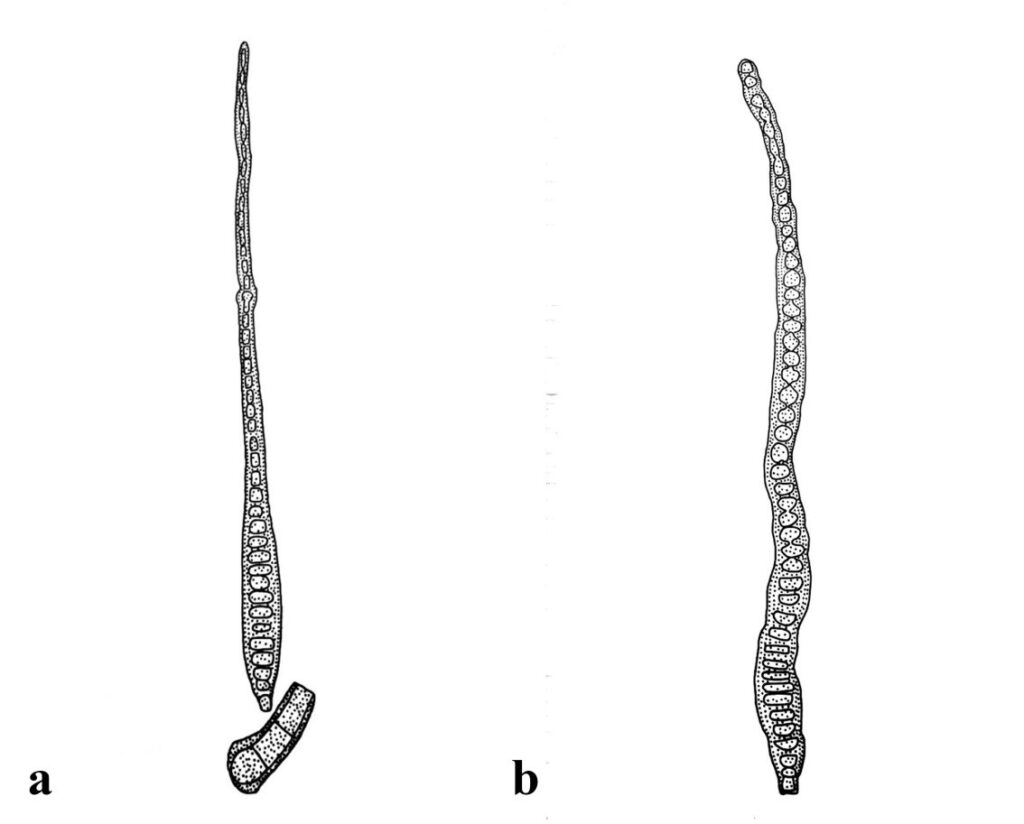Distoseptispora adscendens (Berk.) R. Zhu & H. Zhang, comb. nov.
MycoBank number: MB; Index Fungorum number: IF; Facesoffungi number: FoF 12574;
Basionym: Sporidesmium adscendens Berk., Ann. nat. Hist., Mag. Zool. Bot. Geol. 4: 292 (1840).
Synonym: Clasterosporium adscendens (Berk.) Sacc., Syll. fung. (Abellini) 4: 394 (1886).
Ellisembia adscendens (Berk.) Subram., Proc. Indian natn Sci. Acad., Part B. Biol. Sci. 58(4): 183 (1992).
Sexual morph: Miyoshiella triseptata (Shoemaker & G.P. White) Réblová, Mycotaxon 71: 33 (1999).
Synonym: Lasiosphaeria triseptata Shoemaker & G.P. White, Sydowia 38: 282 (1986).
Notes: Sporidesmium adscendens was synonymized as Ellisembia adscendens on the basis of pseudoseptate conidia and conidiophores with irregular percurrent proliferation. An ascomycetes, Miyoshiella triseptata (≡ Lasiosphaeria triseptata), collected in Hungary, was found to be associated with S. adscendens in the host of Platanus orientalis and therefore reported as its sexual morph. Shenoy et al. reported a strain, HKUCC 10820, of E. adscendens with LSU and RPB2 sequence data. The strain was later proved to phylogenetically cluster in the genus Distoseptispora by Su et al. and was therefore named Distoseptispora adscendens in their phylogenetic tree but not validly introduced as a new combination. Many subsequent authors followed them in using the name D. adscendens.
The morphology of strain HKUCC 10820 was referred to Wu and Zhuang, who described it as having macronematous, mononematous, cylindrical, straight or slightly flexuous, smooth, 1–4-septate, brown to dark-brown conidiophores 20–50 μm long, 7–10 μm wide; integrated, terminal, cylindrical, smooth, brown to dark-brown conidiogenous cells with a size of 5–10 × 3–4.5 μm; and acrogenous, cylindrical to obclavate, rostrate, 16–62-distoseptate conidia 110–375 μm long, 14–20 μm wide at the broadest part, with rounded apexes 5–10 μm wide and subcylindrical to conical–truncate basal cells 5–7 μm wide at the base. This description is consistent with that of S. adscendens given in Ellis, even with respect to the sizes of the conidiophores and conidia. The above characters fit the generic features of Distoseptispora well. Therefore, we formally place E. adscendens in Distoseptispora, as D. adscendens.

Fig. x. Distoseptispora leonensis (redraw according to Wu and Zhuang 2005). (a,b) Conidiophores with conidia.
